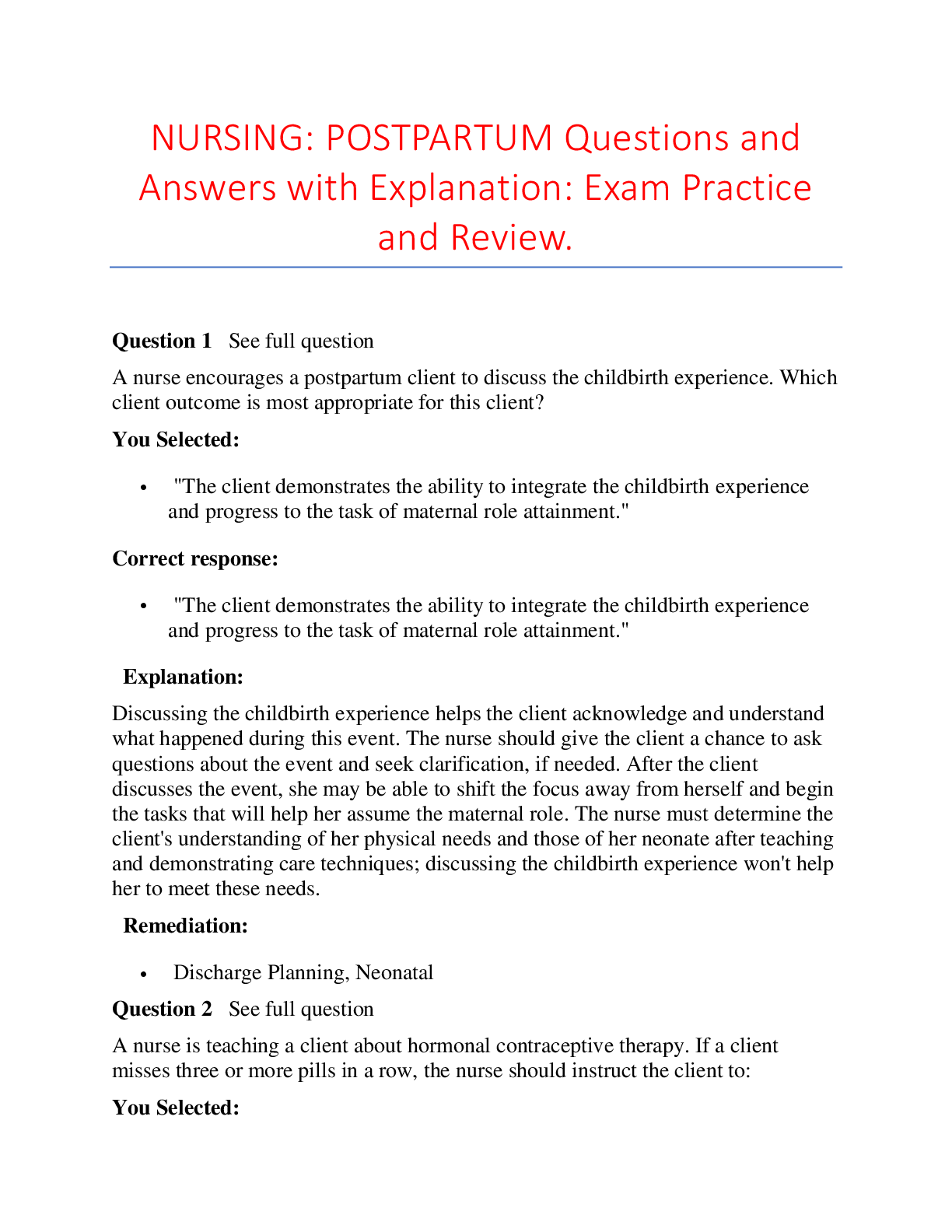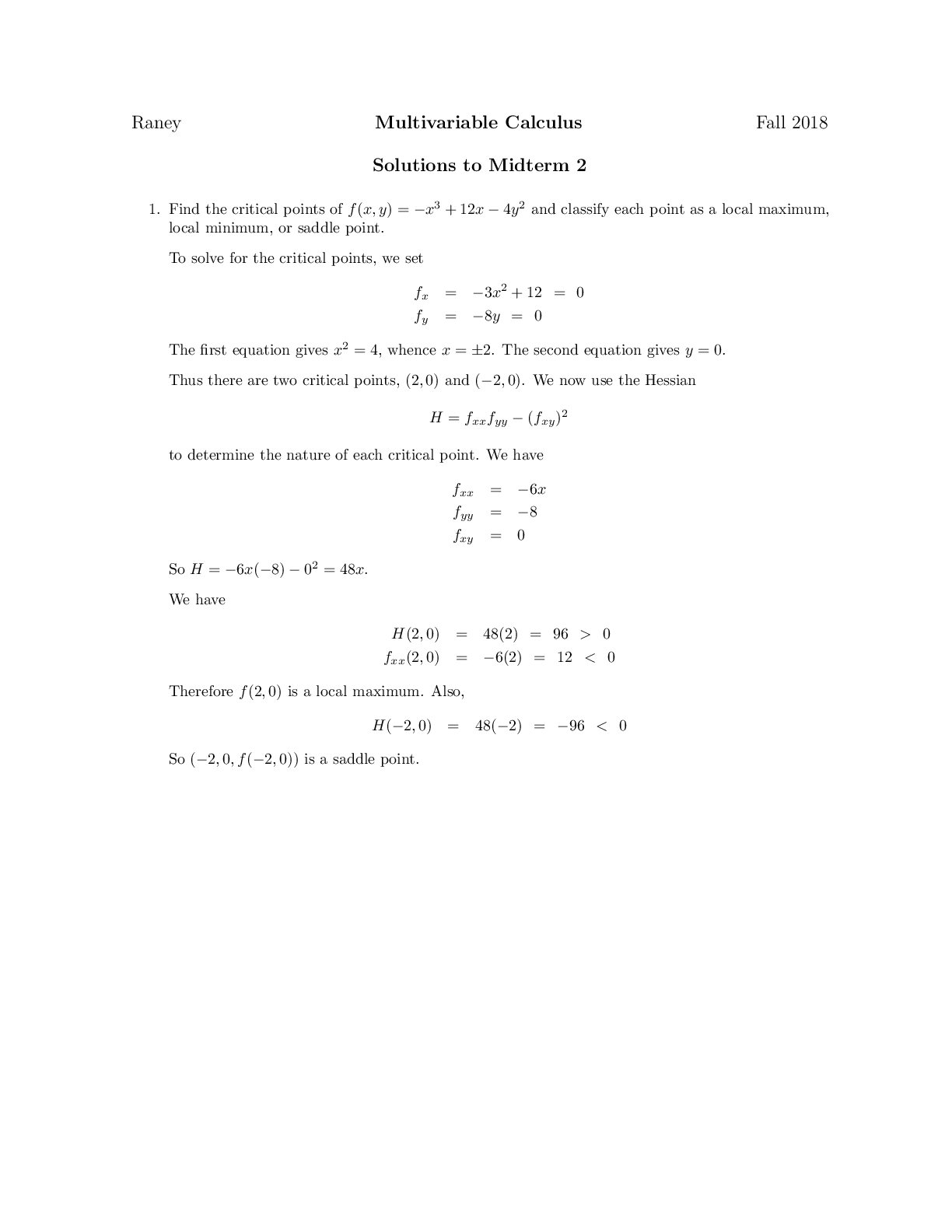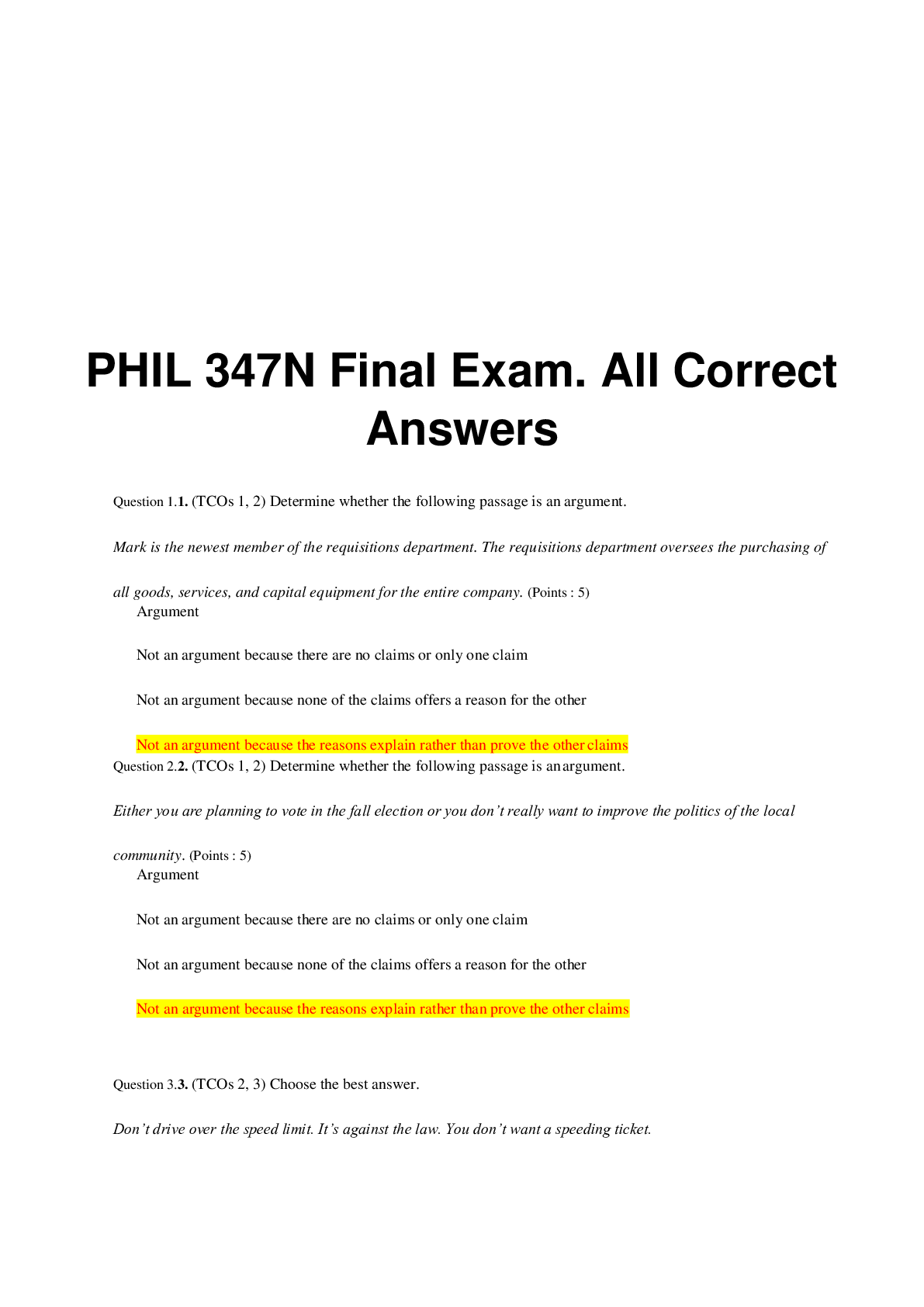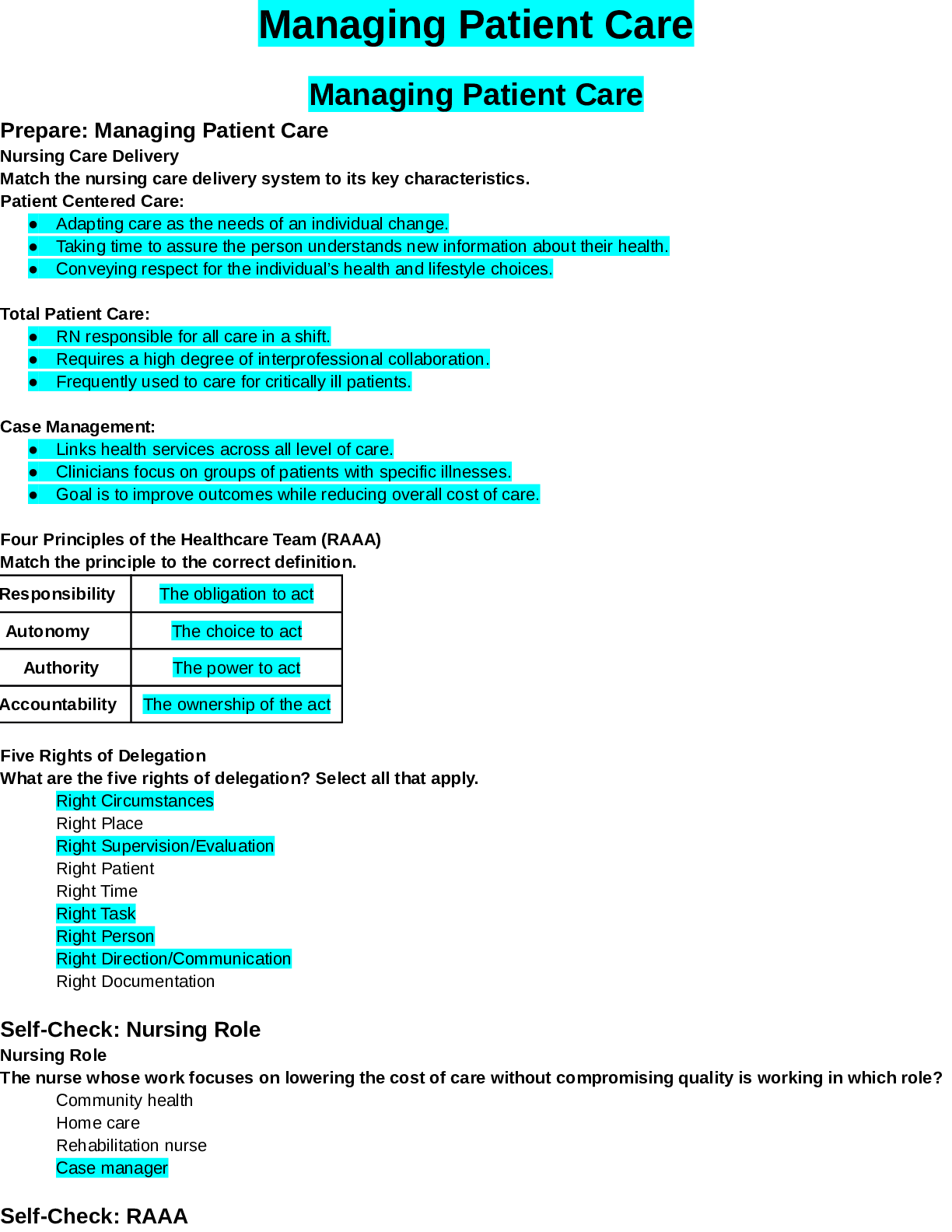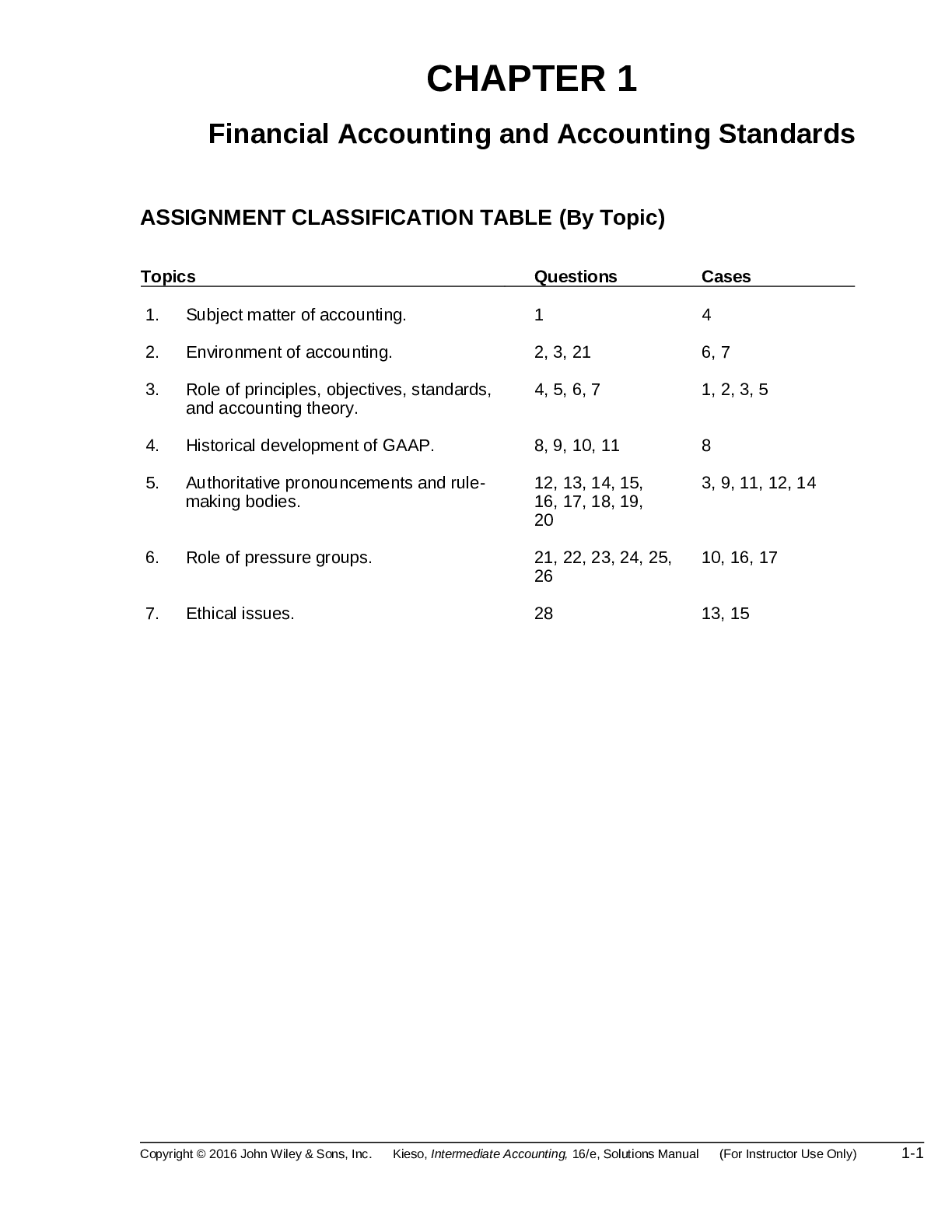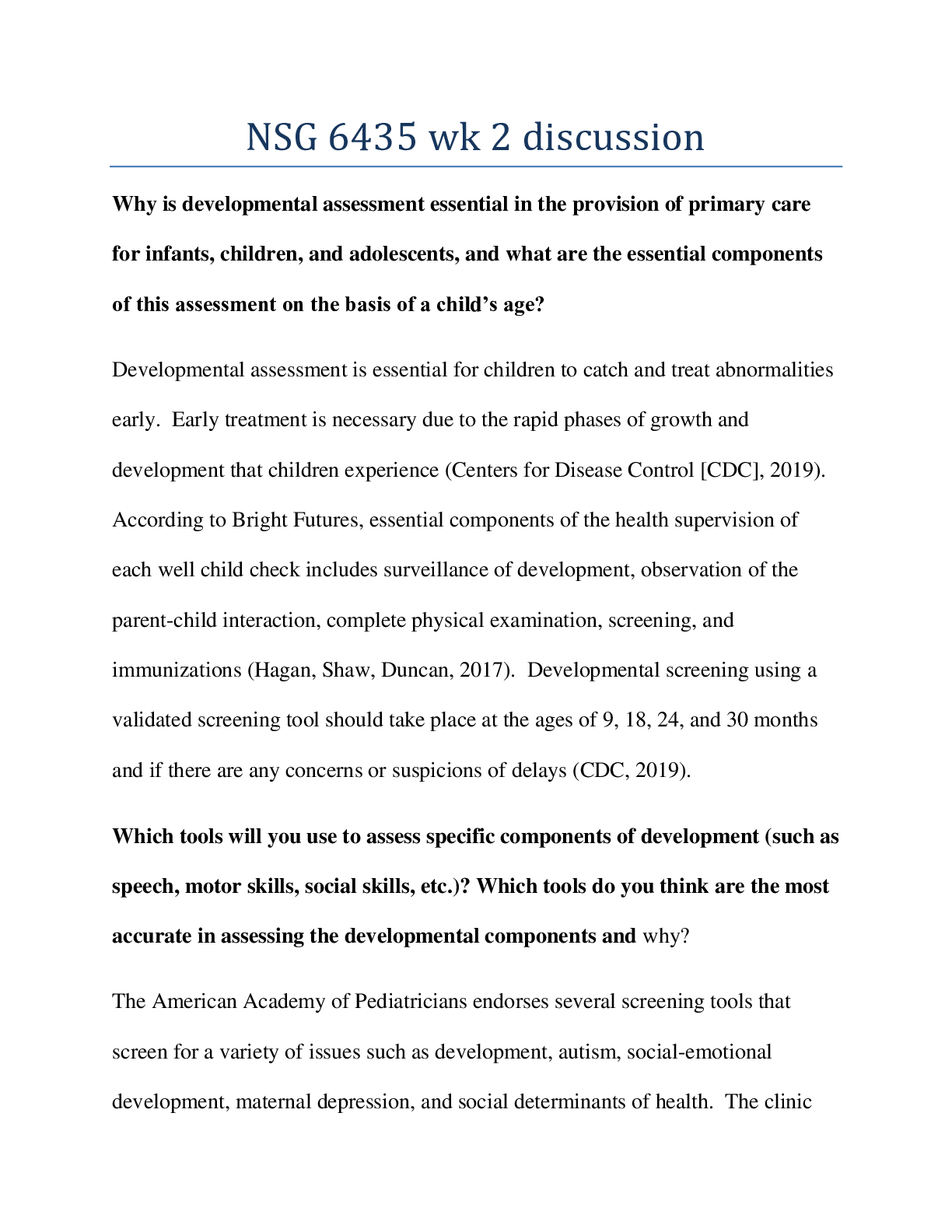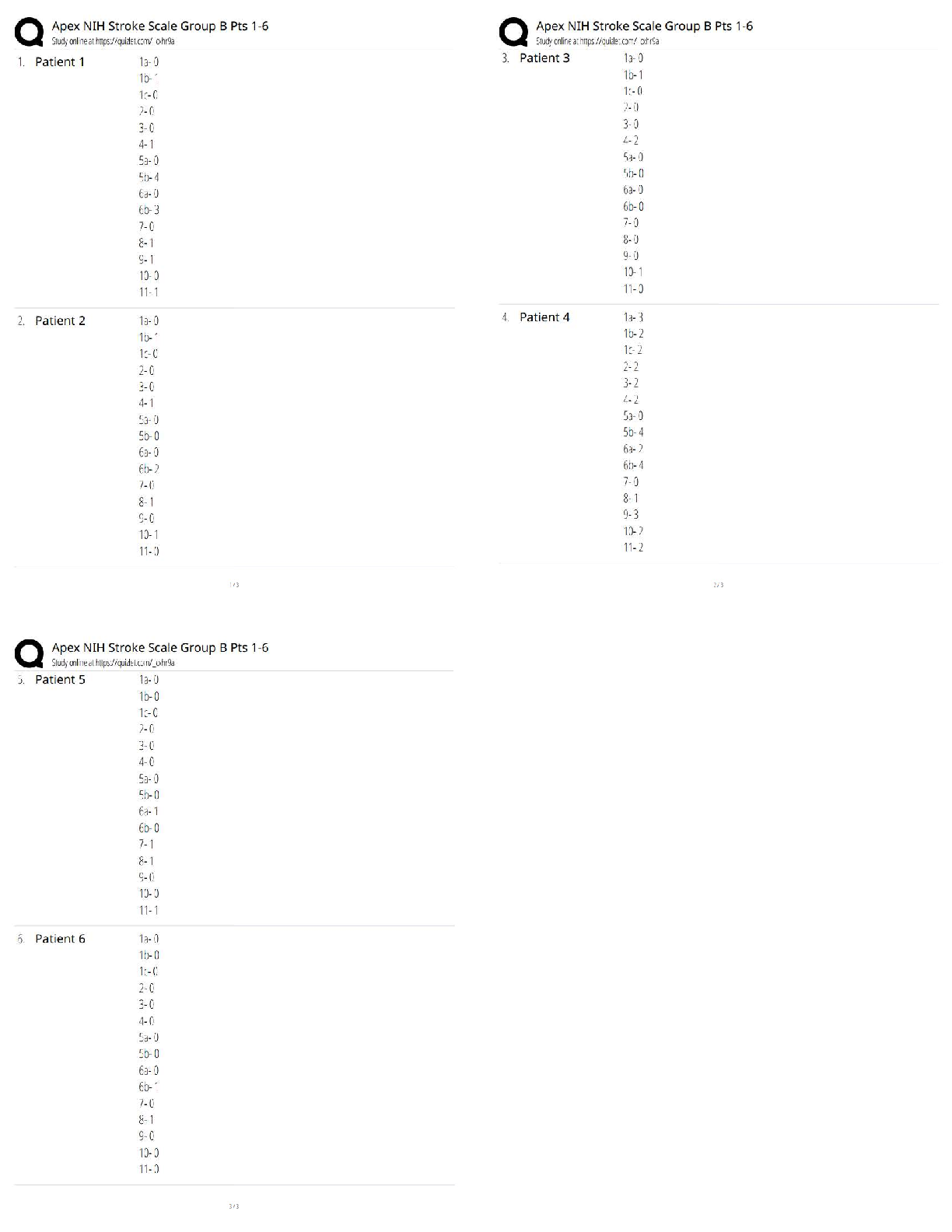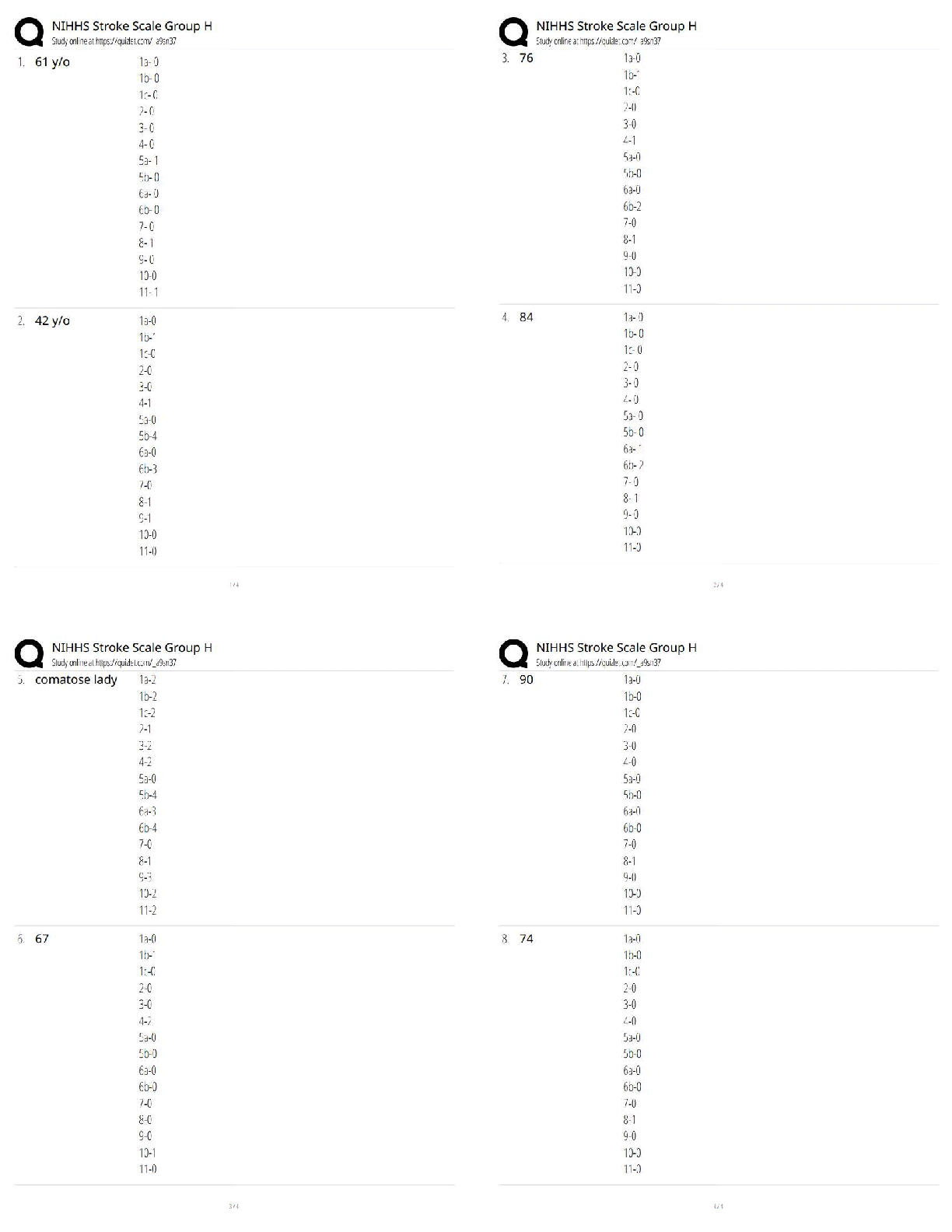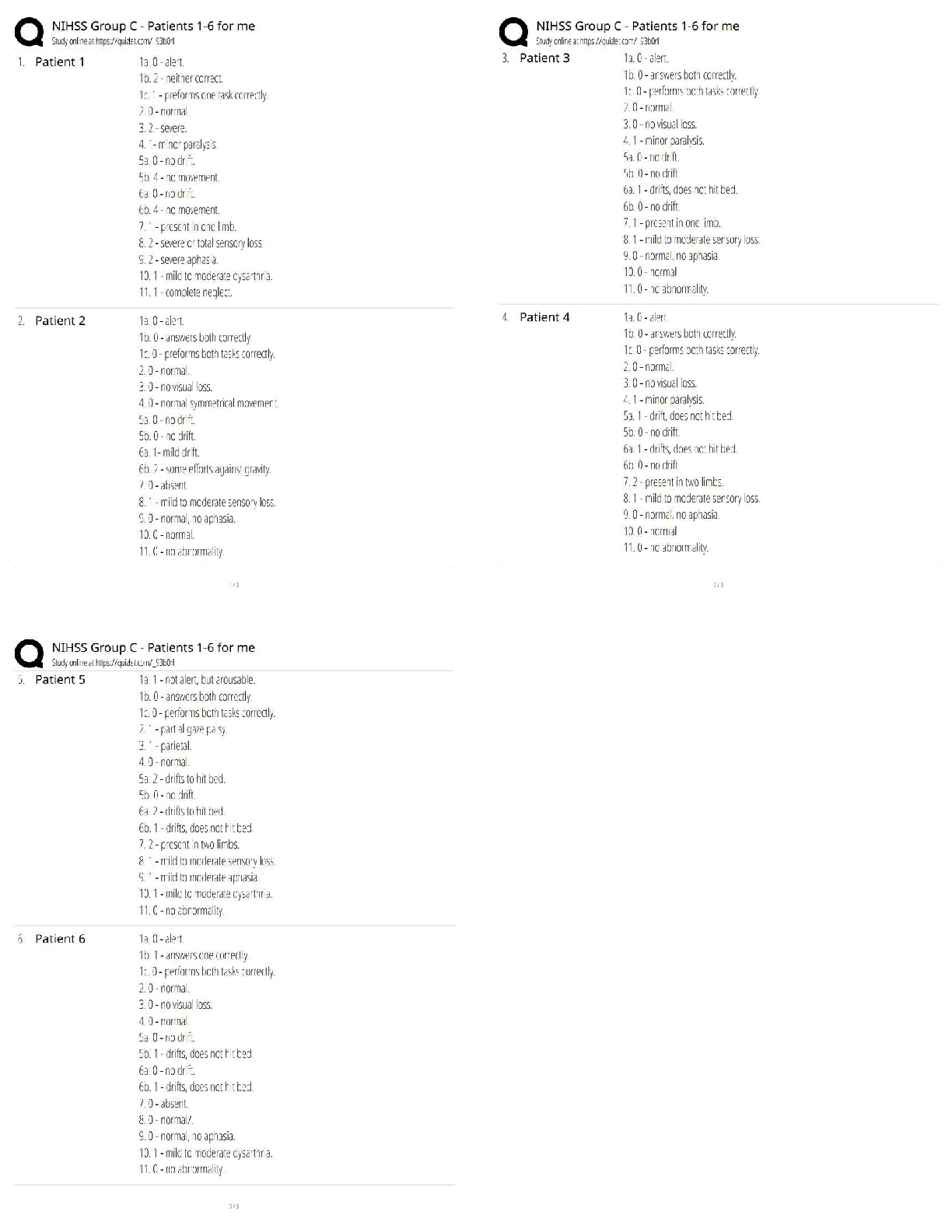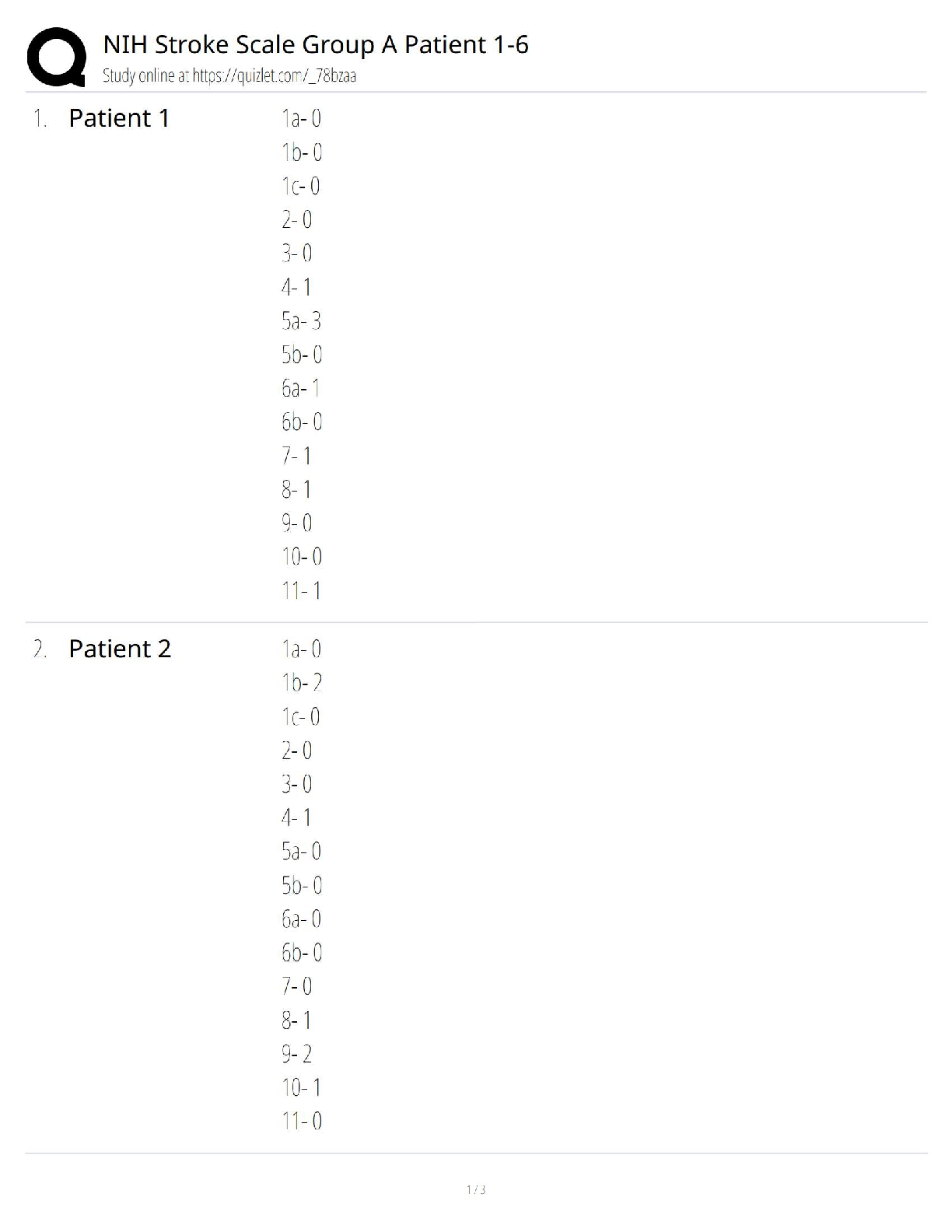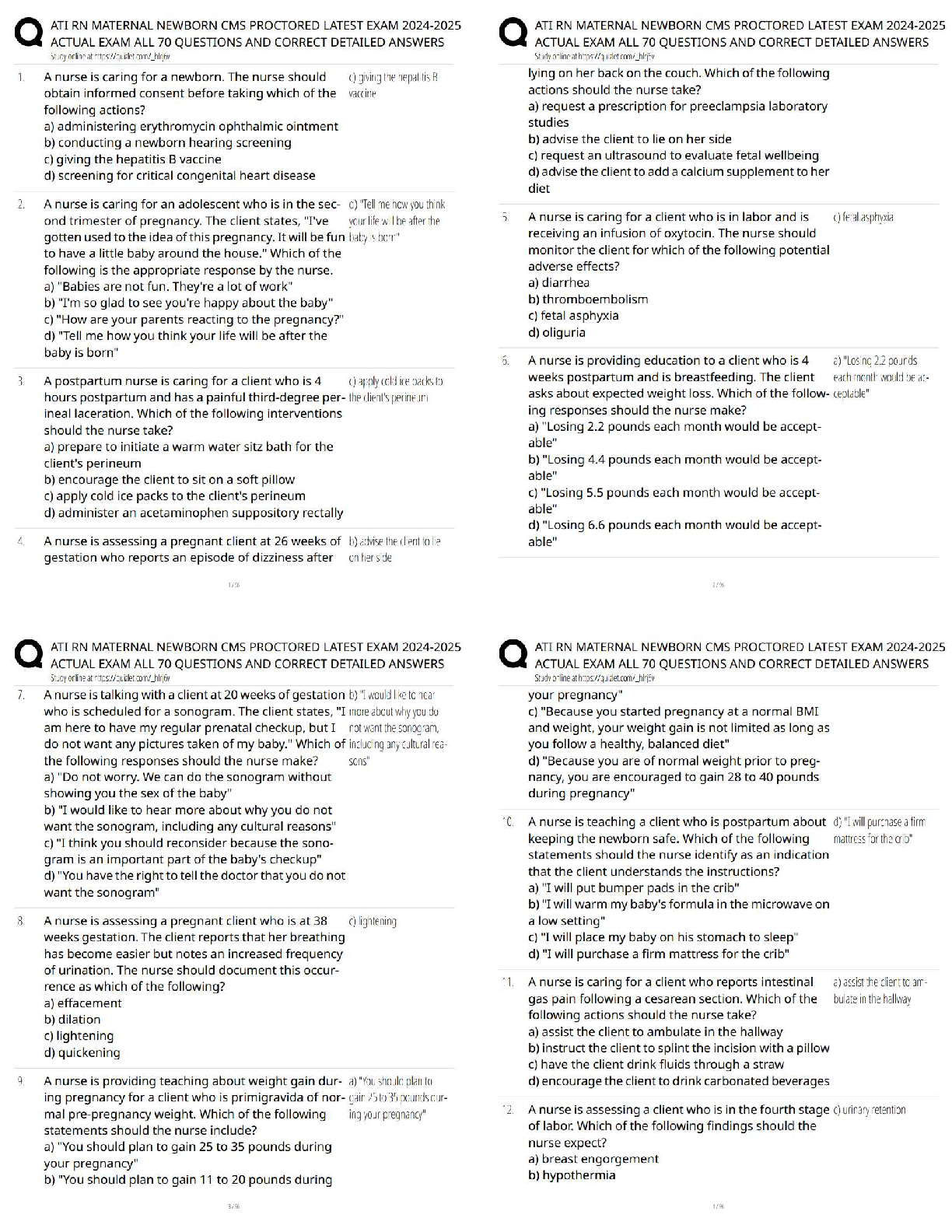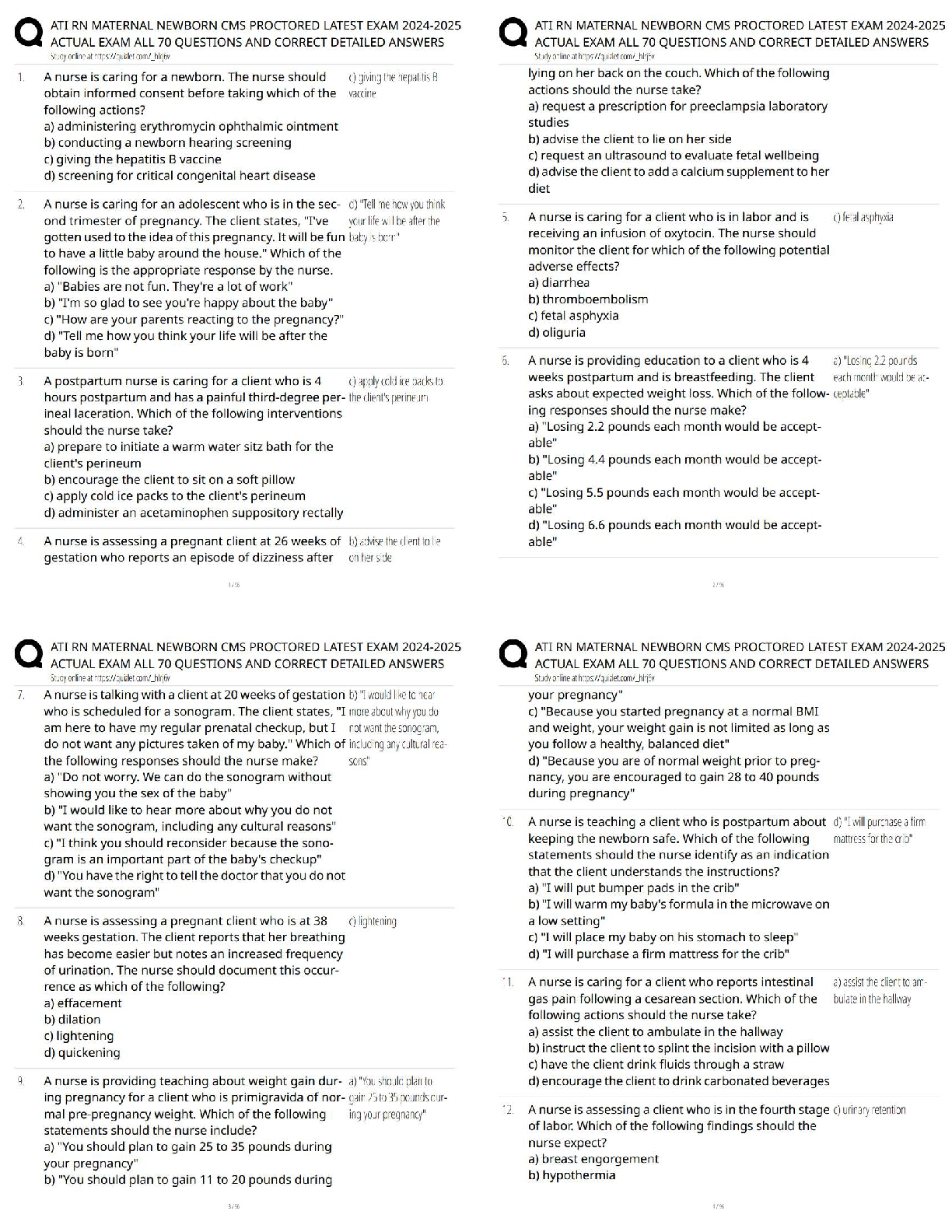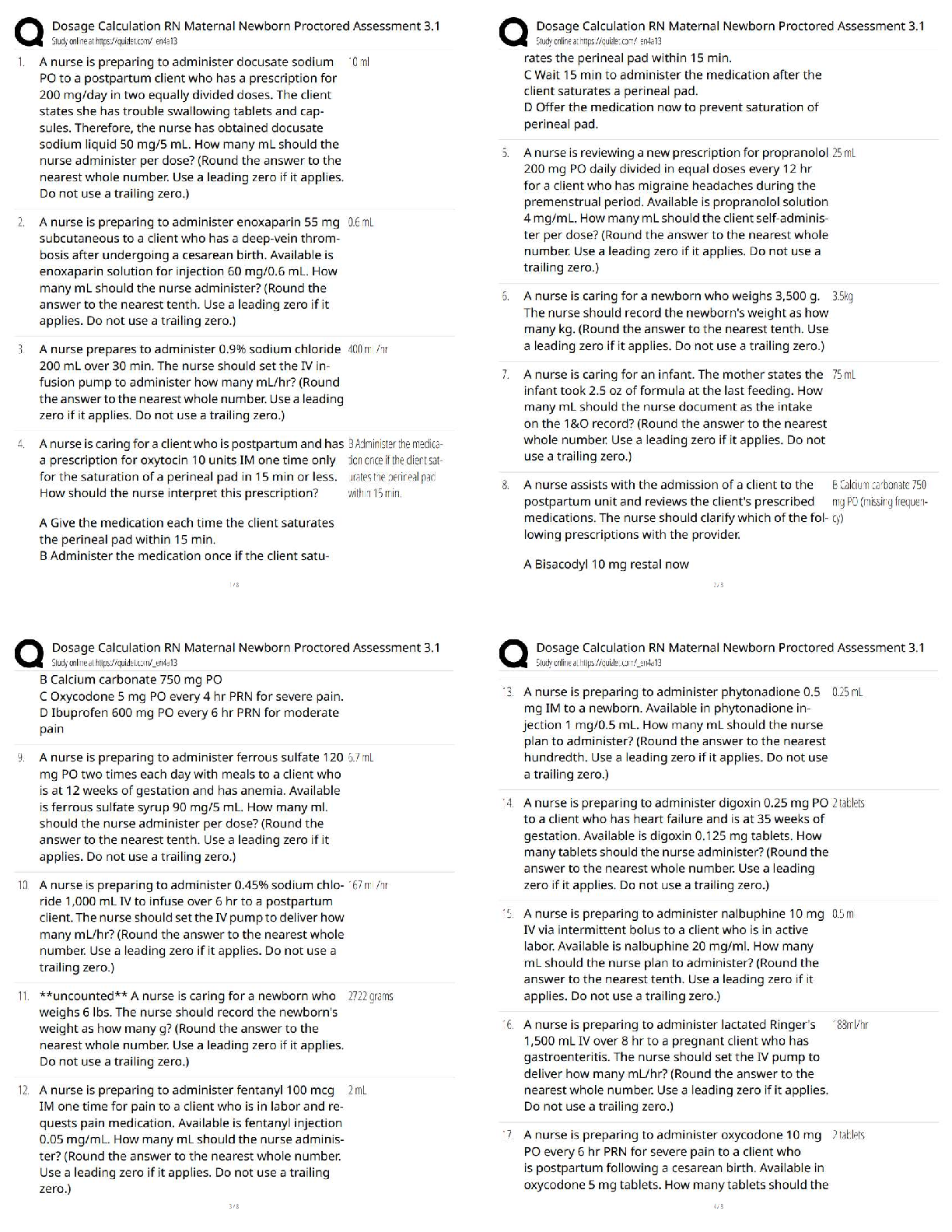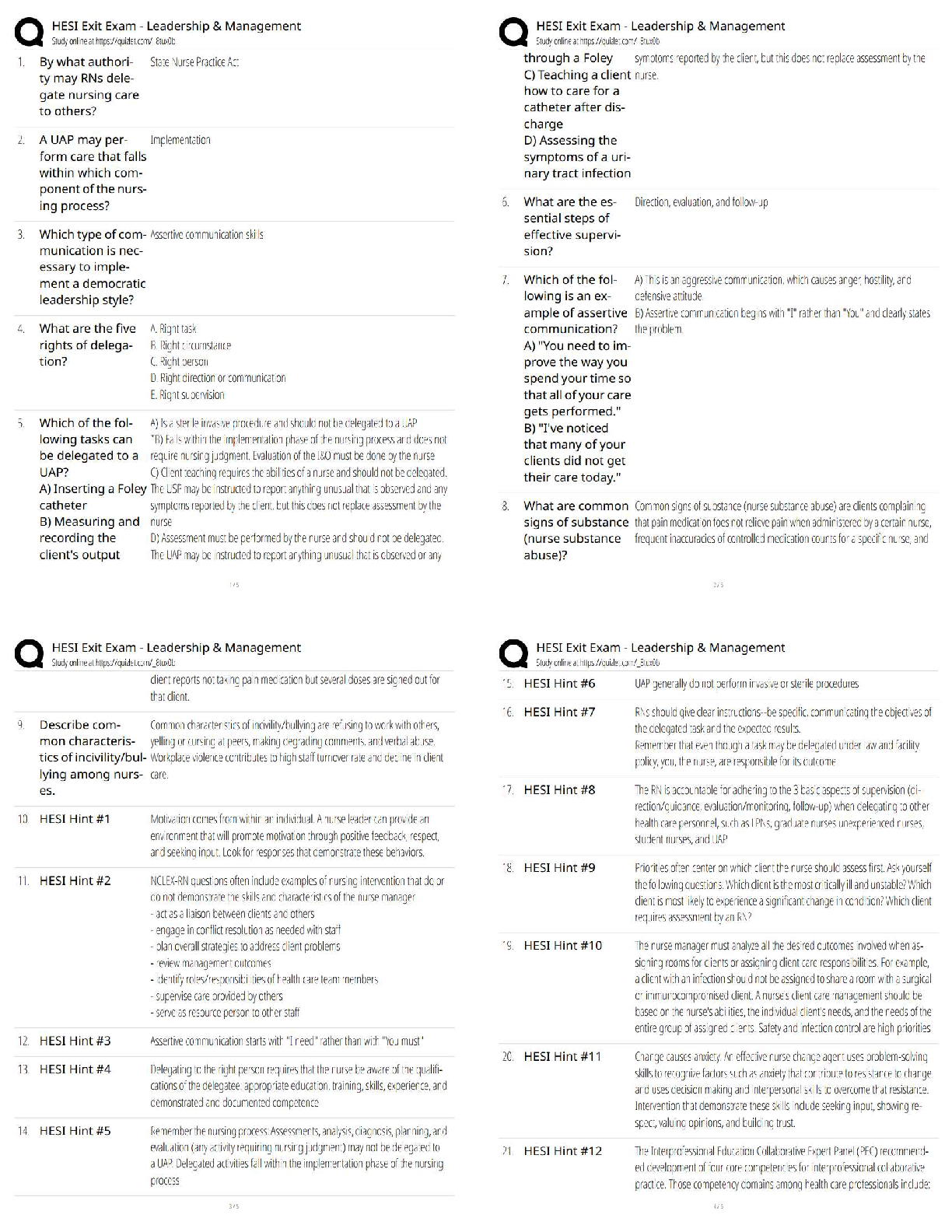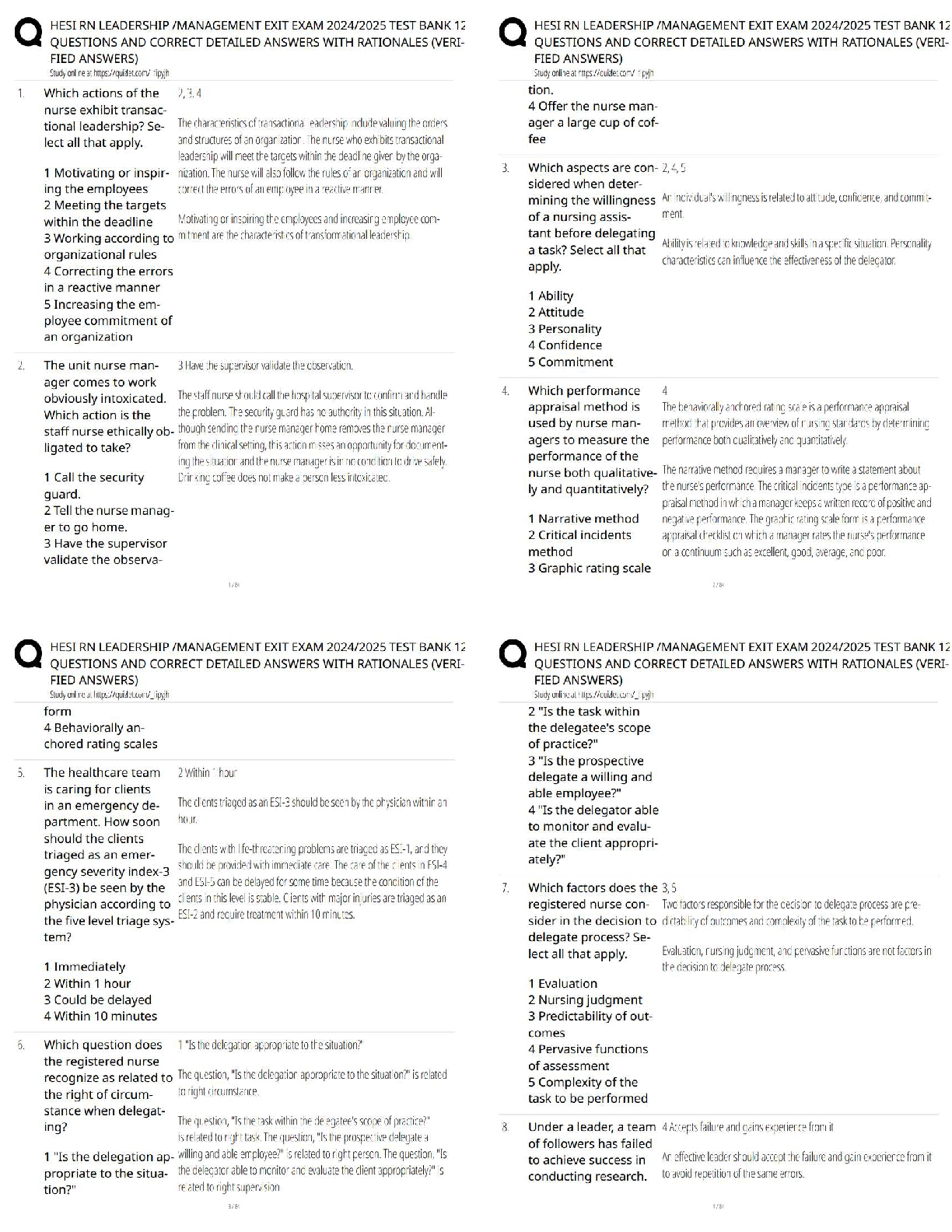Questions and Answers > University of Phoenix FORENSICS CJS/215 PREDATOR FRAUDSTER. All Q&A Exam
Document Content and Description Below
PREDATOR FRAUDSTER
1. Question 1
The most distinguishing difference between an accidental fraudster and a predator is which of the
following:
the predator seeks out opportunity to commit fraud.
C
...
orrect
Correct. In general, predator fraudsters have a criminal mindset and arrogance that leads them to
seek out fraud opportunities, whereas accidental fraudsters take opportunities that arise to them.
2. Question 2
Which of the following is NOT an attribute of the “predatory” fraud triangle.
Opportunity
Arrogance
Criminal mindset
Rationalization
Correct
Correct answer. The “predatory” fraud triangle includes opportunity, arrogance and criminal mindset.
3. Question 3
Which of the following is/are applicable to the “Predator”, but not the “Accidental” fraudster? Select
all that apply.
Pressure
RationalizationArrogance
Correct
Pressure and Rationalization, part of the original fraud triangle, are relevant. They are replaced by
Arrogance and Criminal Mindset for the Predator.
Criminal Mindset
Correct
Pressure and Rationalization, part of the original fraud triangle, are relevant. They are replaced by
Arrogance and Criminal Mindset for the Predator.
4. Question 4
Which of the following statements is true about the Fraud Scale
It mirrors the fraud triangle with the exception of integrity being substituted for rationalization
5. Question 5
The difference between a predator fraudster and an accidental fraudster is:
The accidental fraudster does not seek opportunity; the predator fraudster does.
Correct
True. Accidental fraudsters do not seek out opportunity, but take advantage of an opportunity if it
presents itself. Predator fraudsters have a criminal mindset which persuades them to seek out fraud
opportunities.
6. Question 6
Based on a number of theories, people obey laws for all of the following reasons except:Due to a duty to act
7. Question 7
Which of the following is true concerning the fraud scale developed by Albrecht?
Personal integrity was added, and rationalization was deleted from the fraud triangle.
Correct
Correct. The three elements of the fraud triangle are opportunity, rationalization, and situational
pressure. Albrecht’s model includes both opportunity and situational pressure, but replaces
rationalization with personal integrity.
8. Question 8
Why are preventative controls preferred (if cost effective )?
They keep losses from occurring.
9. Question 9
With regard to segregation of duties, which of the following is not one of the four major functions
authorizing
correcting
Correct
Corrective controls are a major category of internal controls but not one of the major duty functions
to segregate. The major functions to segregate include: authorizing, executing, recording and
safeguarding.
recording
safeguarding10. Question 10
Which of the following is NOT one of the four basic functions that should be considered when
separating duties related to a business event?
Reporting the event
Correct
Correct. B,C,D and E are all definitionally listed as duties that should be separated.
Safeguarding the resulting asset
Executing the event
Recording the event
Authorizing the eventBack
Week 2 Quiz
Quiz, 10 questions
1. Question 1
One major difference between fraud and a mistake is:
Concealment
Cover-up
The act
Conversion (benefit to the perpetrator)
2. Question 2
A fraudulent act can be demonstrated by:
Establishing that the employee concealed the act.
Showing that there were multiple incidents of the same act.
Destroying of evidentiary documents that describe the act.
All of the above.
Question 31
3. Question 3
Conversion can be shown to have occurred by:
Tracing the money to the defendant’s care
Tracing the money to the defendant’s department
Tracing the money to the defendant’s bank account
All of the above4. Question 4
Signs that an individual is a predator fraudster include:
All of the other answers are correct.
Takes advantage of sudden opportunity.
Repeat offenses.
Frequent job turnover caused by boredom.
Question 51
point
5. Question 5
The Triangle of Fraud Action has which of the following attributes added to the Fraud Triangle
Integrity
Concealment
Opportunity
Capability
Question 61
point
6. Question 6
Albrecht developed the fraud scale, which includes the following components:
situational pressures, perceived opportunity, and personal integrity.
high personal debt, living beyond one’s means, drug or alcohol problems.
situational pressures, personal integrity, and criminal record.
None of the above are the components for the fraud scale.Question 71
point
7. Question 7
Which of the following is true concerning the fraud scale developed by Albrecht?
Situational pressures are not important when integrity is examined in the fraud scale.
The fraud diamond and its addition of capability, was based on criticism of both the fraud triangle and
fraud scale.
Personal integrity was added, and rationalization was deleted from the fraud triangle.
None of the other answers are the components of the fraud scale.
8. Question 8
To improve the effectiveness of the fraud triangle, Wolfe and Hermanson suggests which characteristic
as an addition to the fraud triangle?
Capability
Capacity to steal
Integrity
Ego or entitlement.
9. Question 9
When describing the characteristics of a crime, the Triangle of Fraud Action contains which of the
following components?
The Act
Rationalization
Conversion
Financial PressureQuestion 101
point
10. Question 10
Intent is usually demonstrated by showing which of the following?
The act
The concealment
The cover-up
All of the other answers are correct1. Question 1
One major difference between fraud and a mistake is:
Concealment
Cover-up
The act
Conversion (benefit to the perpetrator)
2. Question 2
With regard to the length of an employee’s time with an organization, which of the following statements
is correct.
Most occupational fraud by employees takes place:
in the first year of work at the organization.
after the first year of work at the organization.
in the last years of work at the organization, just before retirement.
after ten or more years of work at the organization, because they have the most authority and access to
company funds such as bank accounts.
3. Question 3
Which of the following is one possible attribute that often determines a predatory fraudster
With the organization 10 or more years before the fraud
Are getting a divorce from their spouse and need the money to pay lawyer fees
Have prior fraud activities in past employment
Their arrogance minimizes their need to conceal their fraud act
4. Question 4
Signs that an individual is a predator fraudster include:Frequent job turnover caused by boredom.
Takes advantage of sudden opportunity.
All of the other answers are correct.
Repeat offenses.
5. Question 5
The difference between a predator fraudster and an accidental fraudster is:
The accidental fraudster does not seek opportunity; the predator fraudster does.
The accidental fraudster is a repeat offender; the predator fraudster is not.
The accidental fraudster is in need of funds; the predator fraudster is not.
All of the answers are correct.
6. Question 6
Which of the following is correct with respect to the Triangle of Fraud Action.
Triangle of Fraud Action represents specific actions that must be performed by an individual to
perpetrate the fraud.
Triangle of Fraud Action supports the investigation but does not represent control points where the
fraud or potential fraud may be prevented, detected, or remediated.
The Triangle of Fraud Action is less valuable to the investigator than the Fraud Triangle because proof of
intent is required.
The Triangle of Fraud Action replaces the Fraud Triangle.
7. Question 7
Which of the following is true of the Dorminey et al “meta-model”
Fraud prevention, deterrence and detection attempt to form a barrier between would the “would-be”
fraudster and the execution of the fraud.
The triangle of fraud action including the act, concealment and conversion do NOT play a role in the
meta-model
The fraud triangle including the pressure, opportunity and rationalization do NOT play a role in the metamodelFraud prevention, deterrence and detection do NOT play a role in the meta-model
8. Question 8
To improve the effectiveness of the fraud triangle, Wolfe and Hermanson suggests which characteristic
as an addition to the fraud triangle?
Capability
Capacity to steal
Integrity
Ego or entitlement.
9. Question 9
Which of the following is correct with regard to internal controls.
The fraud triangle inherently assumes no internal controls
The fraud scale inherently assumes no internal controls
The triangle of fraud action inherently assumes no internal controls
Segregation of duties is most likely the most important internal control
10. Question 10
Segregation of duties, the most common internal control, is best described as which type of control?
detection control.
Preventative control.
opportunity control.
deterrence.1. Question 1
One of the main findings of Donald Cressey is the following observation.
Cressey found that for a large number of people, they commit fraud because they have a financial need
Cressey created the fraud triangle
This should not be selected
Incorrect. Cressey’s work led to the development of the fraud triangle, but he did not create it
Cressey found both integrity and rationalization problems in fraudsters but concluded that
rationalization was the greater weakness.
Cressey concluded that opportunity such as weak internal controls led normally law-abiding persons to
commit fraud acts.
3. Question 3
Which of the following is one possible attribute that often determines a predatory fraudster
Ans.. Have prior fraud activities in past employmentinternal8. Question 8
Which if the following is not considered an internal control
Passwords
Approvals
Cameras
Automated computer programs
Question 5
Capability as an attribute of fraudsters is most closely associated with which of the following
Intelligence, position, ego, and the ability to deal well with stress
8. Question 8
Fraud deterrence begins:
In the employee’s mind
Correct
Correct. Fraud deterrence involves creating an environment that discourages fraudulent activities
through the threat of negative repercussions. Therefore, the employee considering a fraudulent act is
the first person who can prevent a fraudulent act before it is even committed.
9. Question 9
Large frauds are typically associated with all of the following except:
Lack of segregation of duties and responsibilities.
Placing undeserved trust in key employees.
Operating on a crisis basis
Working with management to set realistic goals1. Question 1
Which of the following statements is correct with respect to the fraud triangle.
The fraud triangle does not explain all categories of fraud perpetrators.
Question 2
Which if the following is usually correct, concerning a predator?
Predators are probably more comfortconcerning the fraud able dealing with authorities and anti-fraud
mechanisms, like audits, than accidental fraudsters are.
3. Question 3
With regard to predatory fraudsters, which of the following statements is correct?
Predators spend their time and energy looking for opportunities to commit fraud.
4.The Fraud Diamond has which of the following attributes added to the Fraud Triangle
Capacity
10. Question 10
Segregation of duties, the most common internal control, is best described as which type of
control?
preventative control.5. Question 5
Overall, management must design, implement, and maintain:
internal controls to support effective and efficiency of operations, reliability of reporting, and
compliance with laws and regulations.
6. Question 6
From an investigatory perspective, the shortcoming of the fraud triangle is as follows:
Pressure and rationalization are generally not observable.
Correct
Correct. Pressure and rationalization are generally not observable. Therefore, developing
evidence of pressure and rationalization is more difficult than developing evidence of the act,
concealment and conversion.
1. Question 1
The most distinguishing difference between an accidental fraudster and a predator is which of
the following:
the predator seeks out opportunity to commit fraud.
7. Question 7
From the statements below select the most correct.
Prevention and deterrence are typically more costly than attempting to remediate a fraud that
has already occurred.
Fraud deterrence refers to creating environments in which people are prohibited from
committing fraud.
Fraud detection refers to the process of preventing and discovering the presence of fraud.Prevention and deterrence are typically more cost beneficial than attempting to remediate a
fraud that has already occurred.
Correct
Correct. Prevention and detection can actually save an organization a lot of money compared to
the potential losses of a fraud that does occur or paying for the remediation process for these
frauds.
[Show More]
Last updated: 3 years ago
Preview 1 out of 16 pages







